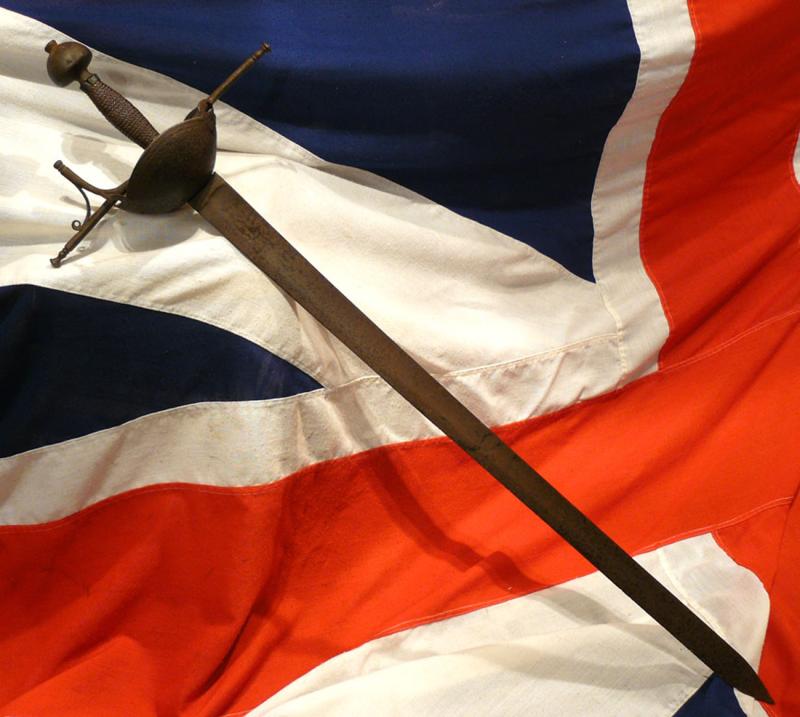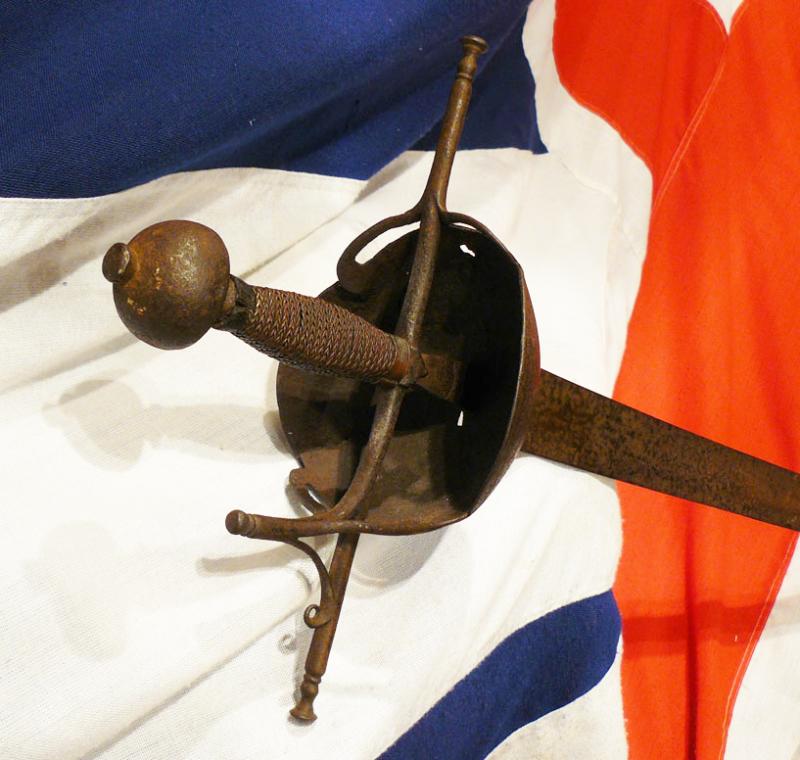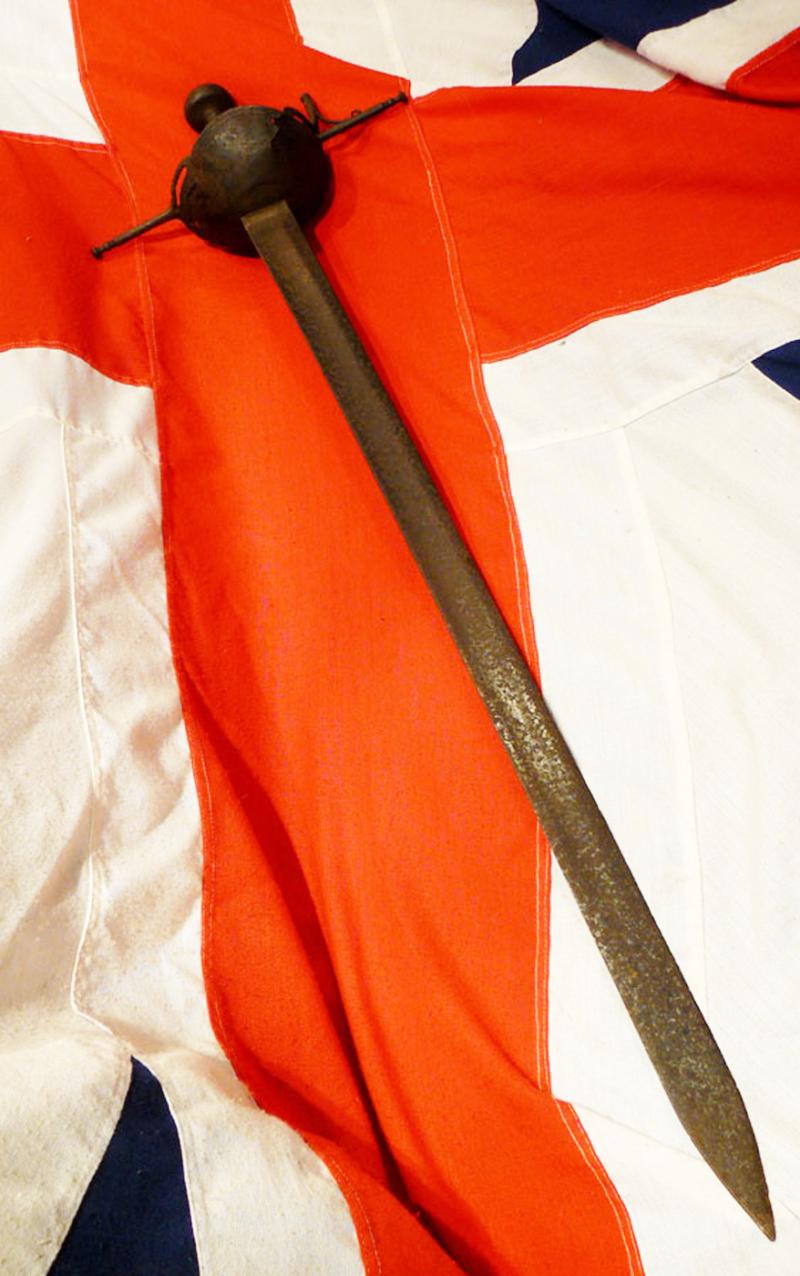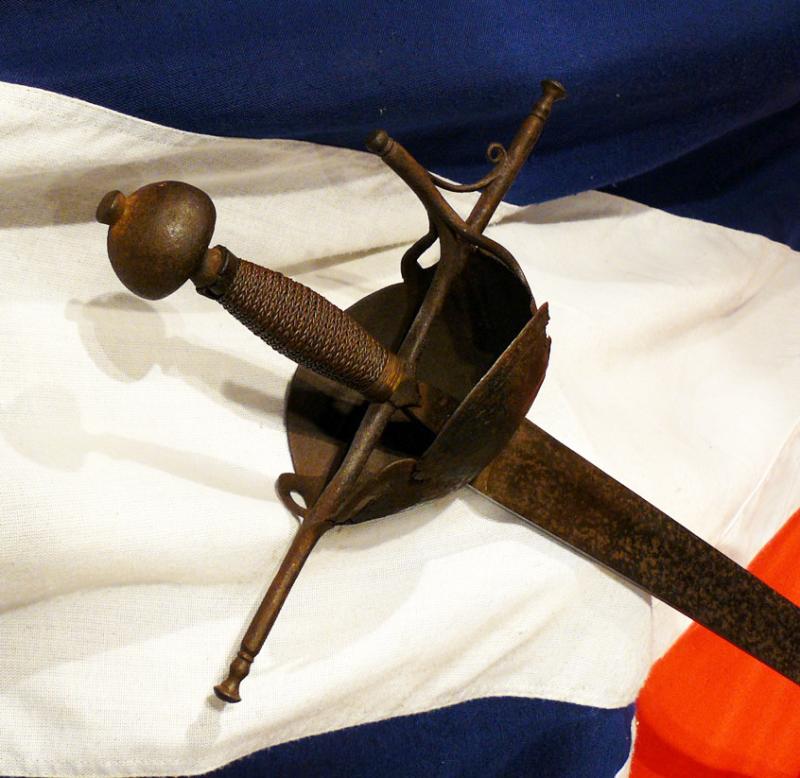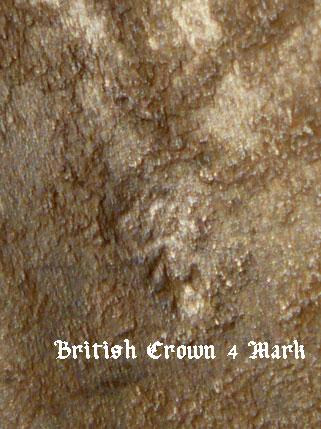A Most Rare, Original, Late 18th Century Spanish Heavy Dragoon Cup Hilt Sword of the Napoleonic War Peninsular Campaign. An I8th Century or Earlier Form Spanish Rapier Hilt With a British 1796 Heavy Cavalry Ordnance Stamped Hadley Contract Blade
This is simply a fascinating and intriguing sword in that in it's service working life it has had a wide 1796 British Heavy cavalry trooper's sword blade, stamped and made by Ordnance contractor, Hadley of 47 Bull St. Birmingham, and supplied by their British allies. The hilt is actually a design and likely made from a 1650 Spanish Toledo cup hilt rapier.
Spanish cup hilt rapiers often originally had long and slender blades, however in the 18th century their blades became wider and of broadsword dimensions when used by Spanish heavy dragoons, especially in the Peninsular war from 1808, but they retained the cup hilt form of the traditional, Spanish cavalry sword.
We also acquired a rare, fully standard Napoleonic Peninsular War 1808 Spanish Heavy Dragoon sword, with its wide blade, and changed hilt pattern
We have never seen an original period Spanish sword mounted with a British ordnance blade before, and this is most intriguing.
We conclude it was added at the time of the Spanish alliance with Britain during the Peninsular War in Spain, against Napoleon's occupying forces. Possibly supplied and given by the British, from such as the 4th Heavy Dragoons or 3rd Dragoon Guards, to their Spanish allies to replace an unsuitable narrow earlier Spanish rapier blade. The 4th Dragoons were landed between the 22nd and 27th of April 1809 at Lisbon and were brigaded with the more senior 3rd Dragoon Guards under Major General Henry Fane forming the first British Heavy Cavalry brigade in the Peninsular War.
The sword's cup has some original combat impact damage and field repair on one side. Traditional long quilons of the late 18th century pattern up to 1808 when the hilt design was changed and the quillons deeply curved.
Crown 4 stamp to blade and maker's mark stamp on backstrap, ordnance contractor and supplier of 1796 Heavy Dragoon swords, Hadley of Birmingham.
The Spanish heavy cavalry in the Peninsular campaign, such as, The Battle of Bailen
Fought July 19, 1808, between 15,000 Spaniards under Castaflos, and 20,000 French under Dupont. The French were totally defeated with a loss of over 2,000 men, and Dupont surrendered with his whole army. The Battle of Bailen was contested in 1808 between the Spanish Army of Andalusia, led by Generals Francisco Castanos and Theodor von Reding, and the Imperial French Army's II corps d'observation de la Gironde under General Pierre Dupont de l'Etang. The heaviest fighting took place near Bailen (sometimes anglicised Baylen), a village by the Guadalquivir river in the Jaen province of southern Spain.
In June 1808, following the widespread uprisings against the French occupation of Spain, Napoleon organised French units into flying columns to pacify Spain's major centres of resistance. One of these, under General Dupont, was dispatched across the Sierra Morena and south through Andalusia to the port of Cadiz where an French naval squadron lay at the mercy of the Spanish. The Emperor was confident that with 20,000 men, Dupont would crush any opposition encountered on the way. Events proved otherwise, and after storming and plundering Cordoba in July, Dupont retraced his steps to the north of the province to await reinforcements. Meanwhile, General Castanos, commanding the Spanish field army at San Roque, and General von Reding, Governor of Malaga, travelled to Seville to negotiate with the Seville Junta a patriotic assembly committed to resisting the French incursions?and to turn the province's combined forces against the French.
Dupont's failure to leave Andalusia proved disastrous. Between 16 and 19 July, Spanish forces converged on the French positions stretched out along villages on the Guadalquivir and attacked at several points, forcing the confused French defenders to shift their divisions this way and that. With Castanos pinning Dupont downstream at Andujar, Reding successfully forced the river at Mengibar and seized Bailen, interposing himself between the two wings of the French army. Caught between Castanos and Reding, Dupont attempted vainly to break through the Spanish line at Bailen in three bloody and desperate charges, losing more than 2,500 men.
His counterattacks defeated, Dupont called for an armistice and was compelled to sign the Convention of Andujar which stipulated the surrender of almost 18,000 men, making Bailen the worst disaster and capitulation of the Peninsular War, and the first major defeat of Napoleon's Grande Armee. When news of the catastrophe reached the French high command in Madrid, the result was a general retreat to the Ebro, abandoning much of Spain to the insurgents. France's enemies in Spain and throughout Europe cheered at this first check to the hitherto unbeatable Imperial armies tales of Spanish heroism inspired Austria and showed the force of nation-wide resistance to Napoleon, setting in motion the rise of the Fifth Coalition against France.
The Portuguese and Spanish played an important part in the war. Retrained and reorganised by Marshal William Beresford, Portugal’s soldiers fought bravely alongside those of Britain. The stubborn Spanish defence of cities and towns tied down thousands of French troops. Spanish armies, though frequently defeated, kept reappearing, forcing France to send more armies against them.
French troops were also required to garrison hostile territory and wage a bitter war against Spanish and Portuguese insurgents, the ‘guerrillas’. French communications and supply lines were harassed by their raids and ambushes. By 1812, the French had over 350,000 soldiers in Iberia, but 200,000 were protecting lines of supply rather than serving as front-line troops.
All of these factors meant that although on paper the French heavily outnumbered the British armies in Iberia, they were never able to concentrate enough of their troops to win a decisive victory. The continual drain on French resources led Napoleon to call the conflict the ‘Spanish Ulcer’.
A picture in the gallery of an old watercolour of an officer of one of the British allies in a Spanish Heavy Dragoon regiment in the Peninsular War, with his identical broadsword bladed cup hilt sword drawn for combat.
42 inches long overall
Code: 25114
945.00 GBP

